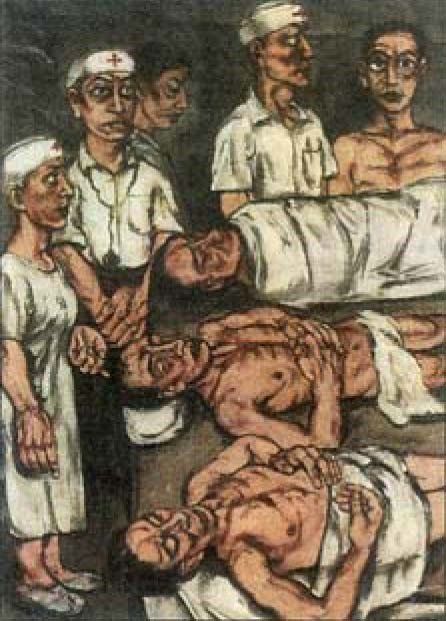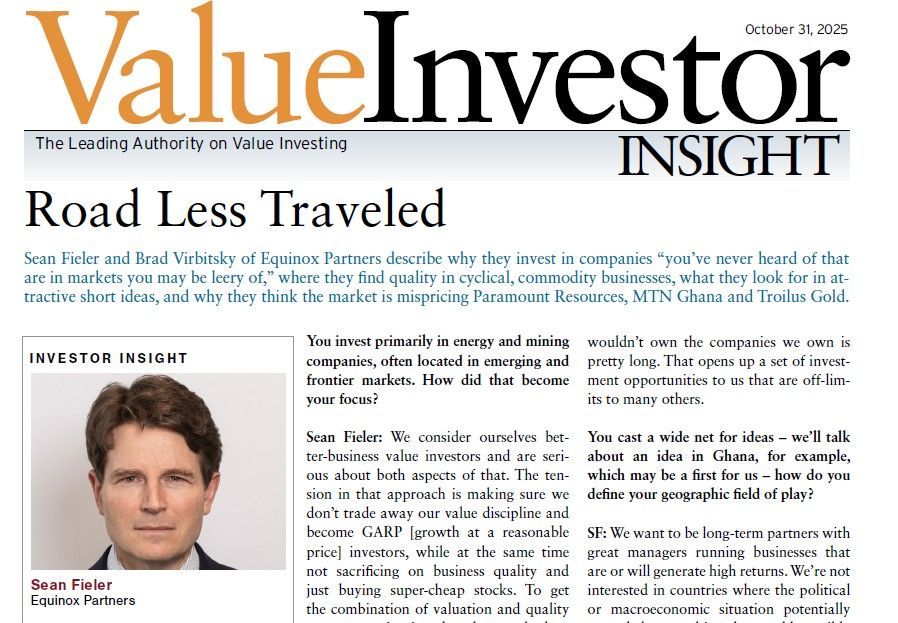Kuroto Fund, L.P. - Q3 2007 Letter
Dear Partners and Friends,
Asian Exuberance
On October 13, the London art auction house, Plillips de Pury, traded Zeng Fanzhi’s “Xiehe Hospital Series” triptych for the second highest price of any contemporary Chinese work ever sold at auction. The eventual hammer price, estimated by Phillips de Pury before the fact at £500,000£700,000, was officially recorded at £2,800,000. No wonder the seller, collector Howard Farber, told Art Newspaper shortly before the auction that, “China will be the story of the 21st century.”
In apparent validation of Howard Farber’s optimistic viewpoint, the Chinese stock market is on a tear, almost doubling this year alone: “the huge trading volumes on the Chinese exchanges are so large that brokering and stamp duty charges actually exceed the total profits of listed companies, according to HSBC.”2 Though all Asian stock markets are doing very well, the stock indices of the most populous countries are showing the biggest gains. The Shanghai index is up almost six times since 2005, and the Indian Sensex has risen six times since 2003.
Such large gains beg the question: “What are Asian value investors to do now?” Or more to the point, should Kuroto follow the path of a well known Mid-Western value investor who recently liquidated the last of his shares in a trillion dollar Asian oil company after making seven times his money? Our answer is, it depends—on company specific characteristics and valuations. Just as we
have been pruning positions in some stocks as they reach our target prices, we are continuing to hold, and in some cases even adding to, investments that still represent compelling value.
Regarding China in particular, we did not take part in this market even in its “out of favor” days. Our lack of participation in the Chinese market is a function of well known issues of transparency, corporate governance, and other such qualitative questions that loom large in our investment evaluations. With the average price to earnings ratio on the Shanghai exchange toping sixty (N.B. stock market gains may represent as much of half of reported profits), the ultimate opportunity is most certainly on the short side of this bull market. Wizened by the painful experience of shorting the mania in US technology stocks in the last millennium, we established only a modest short exposure in what we thought were low risk Chinese shorts. Needless to say, this short position has provided us with another “learning experience.” Our short losses in China in conjunction with our low net long exposure in Asia largely explain Kuroto’s underperformance this year (a narrowing of market leadership to large cap stocks across Asia has also contributed to our fund’s underperformance).
The Chinese mania is, at its heart, a monetary phenomenon, and therefore, particularly worrisome: “The real cause for concern is not whether Chinese stocks continue to rise or suddenly collapse. Rather, it’s the corrupting effect of excess liquidity which is, ‘the fuel that enables manias to blaze stronger and longer than anyone expects….’ The excess liquidity is the product of China’s attempt to peg its currency to the dollar. As a result, interest rates are kept artificially low, boosting exports, but also leading to overinvestment and misallocation of capital.”3
The Chinese banking environment stands in marked contrast to India’s more sensible credit expansion. While we simply can’t imagine that the Chinese boom will end well, we believe that Indian’s macroeconomic position has remained relatively healthy. Moreover, while the Indian indexes have risen substantially, as the table below demonstrates, the Indian stocks we own remain attractively valued.
Market Cap P/E Yr End 3/08 P/E Yr End 3/09 Average Growth '07-'09
Company A 12bn 11. 5 8.9 32%
Company B 35bn 29.2 19.2 67%
Company C 18bn 7.8 5.5 52%
Company D 25bn 13.4 10.3 14%
Company E 39bn 11.0 9.3 21%
Company F 32bn 11.7 9.2 23%
Company G 50bn 15.3 12.6 54%
Obviously, the earnings growth projected above is dependent on the continuation of India’s strong economic growth. That said, the Indian growth story looks sustainable to Kuroto over the long-term, which is not to say that the Indian market cannot crater in the short-term and take our positions down with it.
Sincerely,
Sean Fieler
William W. Strong










